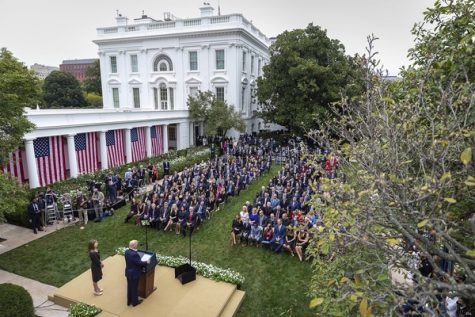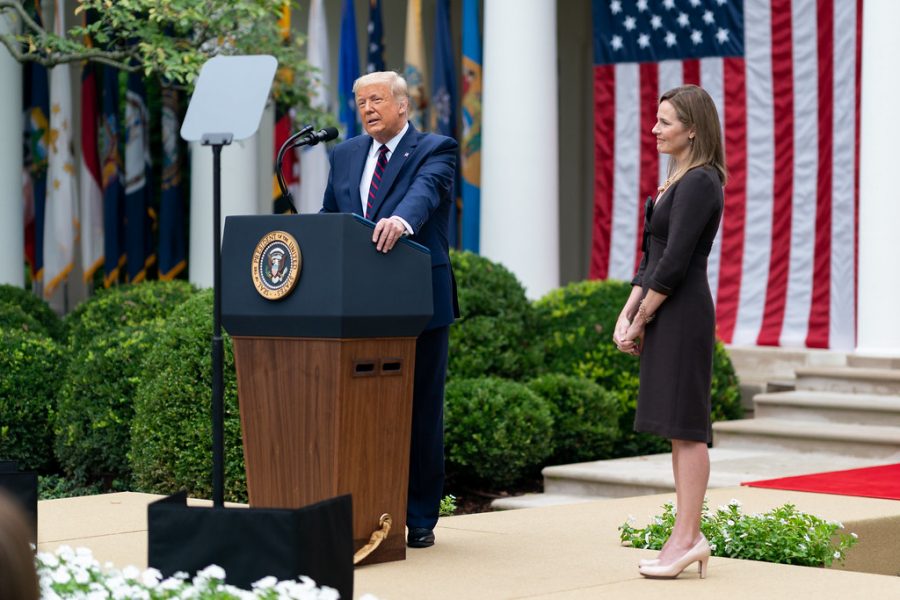Amy Coney Barrett’s Confirmation – The Aftermath
“President Trump Nominates Judge Amy Coney Barrett for Associate Justice of the U.S. Supreme Court” by The White House is marked with CC PDM 1.0
November 20, 2020
On October 31, Amy Coney Barrett was confirmed to the Supreme Court by a vote of 52-48. Her confirmation, which came only eight days prior to the election, had been an extremely controversial topic of the last couple of months.
Barrett was nominated on September 26, only one week after the death of Justice Ruth Bader Ginsburg. Such a nomination caused outrage across the nation, as some were troubled by her views on abortion and healthcare.
The biggest controversy was likely the precedent set by Senate Republicans in 2016. They refused to hold hearings for Merrick Garland, who was nominated eight months before the election. Many Republicans claimed the vacancy should be filled by the next president, and not during an election year. Yet, in a complete turn-around this year, Senate Majority Leader Mitch McConnell stated, “the American people should have a say in the court’s direction. It is a president’s constitutional right to nominate a Supreme Court justice, and it is the Senate’s constitutional right to act as a check on the president and withhold its consent.” Those critical of the nomination say that this precedent should have been used in former President Obama’s appointment as well.
In October, Senator Susan Collins (R-ME) and Senator Lisa Murkowski (R-AK) voted against the cloture motion. Collins was the only Republican to vote against Barrett’s confirmation on Monday, stating “We can’t have one set of rules four years ago for a Supreme Court vacancy and a different set today, it’s just a matter of fairness and being consistent.”
For the first time in 151 years, a Supreme Court Nomination was confirmed without a single vote from the minority party.
Her confirmation was controversial not only in expeditious timing but in her views as well. Much of her views concerning different social topics have caused an uproar.
On abortion, she showed support for greater restrictions and penalties. She has called for the reversal of Roe v. Wade, declaring its legacy to be “barbaric.”

On gun rights, Barrett wrote in a 2019 dissent on a federal law prohibiting felons from owning firearms, that “History does not support the proposition that felons lose the Second Amendment rights solely because of their status as felons, but it does support the proposition that the state can take the right to bear arms away from a category of people that it deems dangerous.”
Critics of Barrett have questioned her qualifications to be on the Supreme Court. Many think she is qualified in intellect and knowledge of the law as a law professor at Notre Dame, but question whether three years of judicial experience is enough to serve on the highest court of the nation.
Barrett, now on the bench, heard oral arguments last week from the latest case to challenge the Affordable Care Act. Although a ruling has yet to be made, many predict that she will vote alongside her conservative bench mates to repeal ObamaCare.
At forty-eight years old, Amy Coney Barrett’s confirmation has made her the youngest justice on the Supreme Court, and her lifetime appointment.


